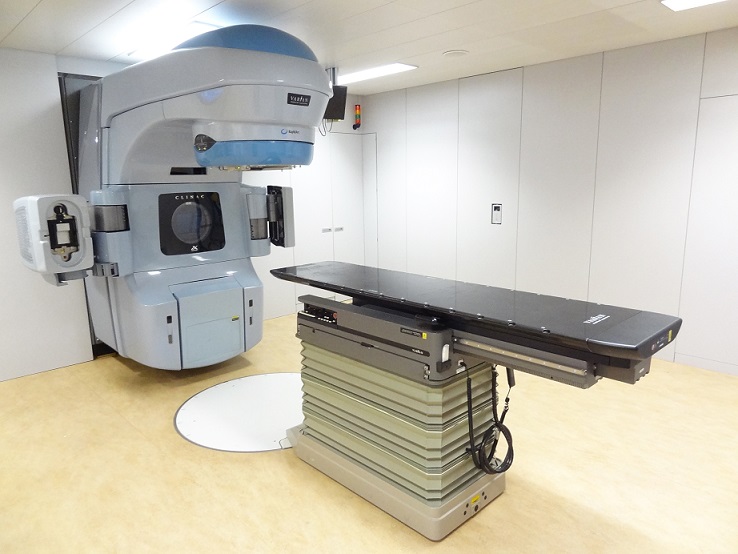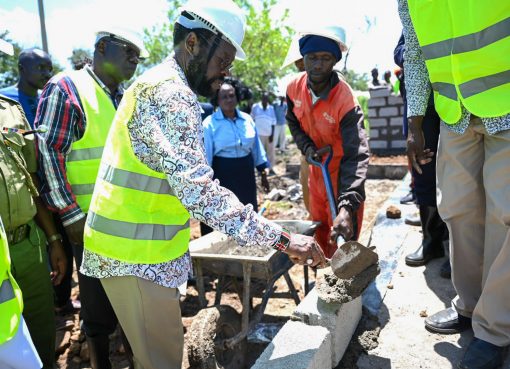The fight against cancer has received a major boost after the County Government of Nakuru acquired its second high-tech diagnosis and treatment machine that employs a new radiation technique that not only increases efficiency but also reduces side effects from powerful rays.
The Linear Accelerator (LINAC) radiotherapy machine is designed to treat a broad spectrum of cancers and significantly enhance patient care.
The new equipment will offer high-energy X-rays through linear accelerators that help burn cancerous cells much faster compared to cobalt units, which have previously been in use.
According to the County Executive Committee Member (CECM) in charge of Health services Ms Roselyn Mungai cancer patients will spend less time undergoing radiotherapy treatment following the installation of new technology that shortens the average session by half.
The new technology is said to have less side effects as it only targets the cancerous cells.
“When normal cells are burnt together with harmful ones, longer healing period, nausea and unnecessary weight loss result,” said the CECM
Ms Mungai explained that unlike the usual radiation therapy equipment, this latest model offers precision by directing the rays to the actual tumor.
“This way we treat the cancer with high doses of radiation but sparing other structures of the body. We basically hit the tumor hard, while minimizing side effects,” she stated.
The CECM indicated that the new equipment offers radiation within 3 minutes compared to the old model in which a patient has to spend almost 40 minutes under it.
“With this advancement, there is less anxiety experienced by patients. This also means you can handle a bigger volume of patients depending on the number of staff,” she pointed out.
The new LINAC technique also employs VMAT (Volumetric Modulated Arc Therapy) and IGRT (Image Guided Radiotherapy) which cannot allow a radiologist to do any radiation before an image is taken to determine the patient’s progress. In such cases errors are minimized as much as possible.
She said the two LINAC equipment will enable better accuracy in tumour targeting by oncologists with the protection of the critical surrounding structures hence improving the treatment outcomes for patients and reducing radiotherapy treatment side effects.
“These machines will be instrumental in bridging the quality and accessibility of proper health care for cancer patients. With this initiative, we are sure to witness the best treatment outcomes. The machines will also reduce the overall patient treatment duration,” affirmed the CECM.
She added that patients who utilize the machine will have access to the best outpatient oncology care in Kenya and the entire region.
Most oncology units in private and public facilities have solely been relying on Cobalt-60 radiotherapy machines before gradually embracing digital Linear Accelerator Machine (LINAC) which has gained popularity worldwide due to its advanced features.
With a cobalt machine, the radioactive element (cobalt) releases gamma rays which are used to destroy cancer cells. Since the rays are emitted as the cobalt gradually decays, the amount of radiation released decreases over time.
The radiation dose is high when the cobalt is ‘‘new’’, but as it ages the dose decreases.
Thus, if the machine initially offered radiotherapy treatment to patients for 20 minutes, doctors would gradually increase the duration so as to attain the required dose. Ms Mungai noted that this contributes to the long queues at oncology facilities.
Hospitals using this technology are required to change their radiation source (cobalt) after five years. The LINAC machine, on the other hand, uses electricity to produce x-rays which destroy cancer cells.
Ms Mungai explained that since its energy levels are higher, the LINAC machine is better suited for treating deep-seated cancerous tumours than the Cobalt one.
It also has electron beams which enable doctors to adequately treat superficial tumours without harming organs such as the liver, lungs and kidneys.
The beams can be used to treat cancers found in various skin regions. It also treats tumours that affect limbs such as melanoma and lymphoma. The CECM noted that the high-tech LINAC machines protect patients from adverse effects of radiation treatment.
The machine comes with software which allows doctors to map treatment areas on dummy ‘‘digital’’ patients as they develop treatment plans specific to various patients.
“From the computer, oncologists can tell exactly where the radiation will go and if they notice that it may affect certain body organs, they make adjustments accordingly,” she said.
This ensures that radiation is directed to the intended treatment site thereby minimizing adverse risks to patients.
Since the LINAC technology uses electricity to produce x-ray beams, once the machine is switched off there is no radiation in the room.
But the cobalt machine keeps emitting radiation whether it is being used or not. Hospitals often avert risks by shielding the cobalt when the machine is off.
Used up cobalt can also pose environmental problems if disposed of incorrectly because it still releases radiation.
Aside from cancer treatment, the LINAC machine has other medical uses.
Its radiation can reverse the rejection of an organ transplant, suppress the immune system of patients undergoing blood and marrow transplants, and correct certain neurological and cardiovascular disorders.
Despite its challenges, the Cobalt machine is still effective in treating cancer. It is also prevalent in most developing nations due to its cheaper cost, reliability and ease of use.
Cancer can also be treated through surgery and drugs (chemotherapy). But sometimes patients may require all the three types of treatment, especially if the disease is diagnosed late.
Ms Mungai said that cancer is the third leading cause of death in Kenya after infectious diseases and cardiovascular diseases accounting for 8 per cent of overall mortality with 42,000 cases and 27, 000 deaths annually.
She said that the majority of cancer patients are diagnosed at late stages when treatment outcomes are poor and, therefore, thousands of people succumb to cancers that would often be treatable.
By Anne Mwale and Jedidah Gitau





